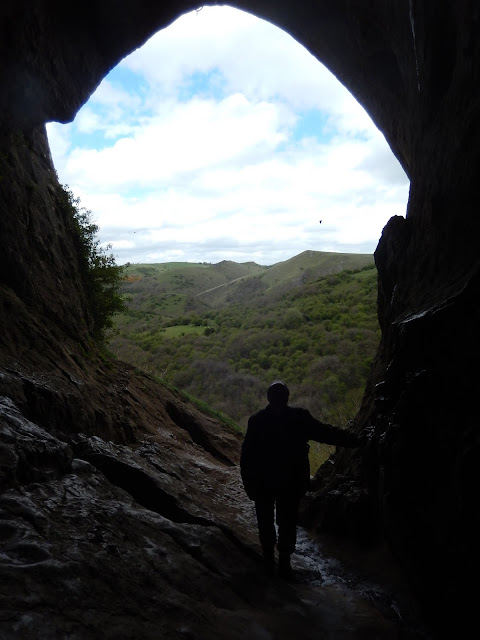Haia Pawb
Before I get to the main topic of this post, I should clarify something. A few readers have said that, because my last post described an activity in Wales, they thought I was still there. I’m not. I returned home to Melbourne on 30 May. However, because I was travelling around England, Wales and Scotland during the last four weeks of my trip, I didn’t have the time to write up my experiences. This I plan to do over the few weeks, so I can have a complete record of the trip.
The day I left Corris, I travelled to Manchester to spend a few days with my friend Grevel Lindop. During my last trip to the UK, I meet Grevel in person at a conference in Oxford, though we had been in contact by email some years before when he had accepted a poem of mine for Temenos Academy Review. As I mentioned in my blog about Alan Garner, when I told Grevel about my dark ages project, he invited me to stay at his place so he could take me to Alderley Edge and show me sites associated with a Merlin legend there. We had a fantastic time exploring the Edge and also Lud’s Church, and enjoyed discussing our common interest in the sacred sites of indigenous Britain. With this 2015 trip I organised to spend more time with him, so we could continue such explorations.
The day after my arrival, Grevel drove me to the Manifold Valley of the White Peak in Staffordshire to visit a Karst cave known as Thor’s Cave. The cave is situated in a steep limestone crag and 19th and 20th centuries excavations in it and the adjacent Thor’s Fissure Cavern have found human and animal remains, stone tools, pottery, amber beads, and bronze items. These findings suggest usage from the Late Paleolithic through the Iron Age and Roman periods.
The weather varied during the day, from heavy showers in Manchester to occasional drops of rain, mild squalls and brilliant sunshine, as we spent a delightful hour or so walking along the Manifold Way, which is the site of a disused railway line that used to travel from Hulme End (our starting point) past the cave to Waterhouses in the south.
We pressed ahead along the bitumen track past rook roosts, through choruses of wrens, thrushes and robins; past unseen blackbirds with their chink-chink alarm calls; past fields of sheep and inquisitive lambs that almost came up to us at the fence; past a manor house with fancy outdoor extensions of windowed terraces and with horses in its pastures; past buttresses of limestone; past fields, old stone barns and outhouses; past steep slopes of greening trees. Much of the path follows the Manifold River, which was high and muddy, the colour of coffee, with wind and river noise roaring yet indistinguishable.
 |
| The Manifold Way |
 |
| Rook roost |
 |
| Limestone buttress |
Then we reached the cave, which is high up on a crag around which jackdaws chased insects, often diving into and through the cave itself, using a small opening at the side of the hill. We climbed the muddy, slippery stone track and came to the massive opening, with a stone ledge at its lip overlooking the Manifold Valley. And directly opposite, near a little refreshment place further down the valley, was another, much smaller, line-of-sight cave.
 |
| Thor’s Cave, from The Manifold Way |
 |
| Graphic with details about the cave |
 |
| View of the Manifold Valley from inside the cave entrance |
 |
| Photo of me in the entrance (taken by Grevel), showing size of opening and the vista beyond |
 |
| A rock wall inside the entrance of Thor’s Cave |
Though Thor’s Cave has vantage and security (see the Alan Garner talk about his discussion of Professor Jay Appleton’s prospect-refuge theory of aesthetics), it apparently wasn’t used for habitation, as no signs of food remains or ash from cooking fires has ever been found. The cave itself is huge, with caverns branching off one another and opening deeper into the hill. Even though other visitors had defiled the place with beer bottles, food wrappers and a fire or two, the further I went into the cave complex, the more sacred it felt. In one cavern, I turned around to see Thor himself in the shadows, shape and texture of a rock wall.
 |
| View from top of crag, showing line-of-site cave down the valley |
 |
| Another view of the Manifold Valley, from the top of the crag |
After lunch on the ledge outside the cave, we climbed to the top of the crag for views of the valley and surrounds and then headed back to the car park, with a stop at the line-of-site cave. Many of the wildflower photos in an earlier blog posting were taken during this return walk.
 |
| Approaching the line-of-site cave |
 |
| Inside the cave |
We drove back to Manchester and had a delicious meal at Sanam Sweethouse and Restaurant on the ‘Mile of Curry’, a restaurant that Grevel and his wife, Amanda, used to visit 40 years earlier. Over nightcaps of Scotch and Welsh whisky we discussed plans for our next day’s visits to more sacred sites. More about this in my next posting.
Till then.
Cofion cynnes (Warm wishes)
Earl

Hi Earl,
Loved the description, especially of the track, with all the visuals and sounds that made one feel as if one was there. I look forward to the next installment.
Cheers Nadine
Hi Nadine
Thanks for your comments and for your support.
Chers
Earl